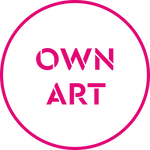Ever since I first visited Costa Rica almost 20 years ago, the country has held a special place in my heart. For me it has been a sanctuary, a place to visit that allows me to disconnect, get back to nature, and recharge. In fact, I loved it so much that in 2015 I purchased land, and am now fortunate enough to own a property and several acres of land perched at the top of a mountain in the Nicoya Peninsula. This region is one of only five Blue Zones in the world - areas where locals are proven to live more fulfilling, longer lives…so here’s hoping!

What makes Costa Rica so special?
There were a lot of things that attracted me to Costa Rica. Of course, there’s the beautiful climate and beaches, but also the nation’s history, people and ethos. Long before borders existed, what is now known as Costa Rica was recognised as a significant site of spiritual pilgrimage for people across South and Central America. Later, when many were fleeing Spanish invaders, Costa Rica provided sanctuary, and eventually went on to become the first democratic country in Latin America. The nation was one of the first countries in the world to abolish their military, and all funds that were once directed towards the army are now plied into education. Costa Rica continues to be a place of sanctuary, attracting special souls from around the world.
Costa Ricans also embody a unique philosophy that appealed to me. This attitude, known as Pura Vida, couldn’t be more different to that of the mile-a-minute western world. The straight translation means ‘pure life’, but Pura Vida is more than just a simple translation, it is a dedicated way of life, a state of mind that reflects Costa Rica’s values of happiness, family, well-being, dependability and satisfaction. Values I hold in high regard.

I know. It sounds idyllic. And trust me, it is. However, having spent a lot of time in the country and getting to know the local people, I discovered that beneath the picture perfect exterior, Costa Rica is a country that has been badly affected by cattle farming. Since the end of World War II, 80% of Costa Rica’s forests have disappeared, and 60% of the natural habitats destroyed were cleared to make room for cattle farming.
While most of us know that agriculture is the leading cause of climate change, the knock on effects are more far-reaching, and include natural disasters, disease, loss of indigenous knowledge and displacement of people as they are forced to leave home to pursue job opportunities.
Costa Rica’s role in the fight against climate change
Another thing that makes Costa Rica so special is its capacity for helping to reverse the effects of climate change. Its unique ecosystem has been identified as one of the most important in the world, with a 2020 study finding that if 30% of the world’s 30 most important ecosystems are regenerated by 2030, it’s possible to reduce the amount of carbon dioxide in the atmosphere by 49%.
Upon learning this, it became glaringly apparent to me that as a landowner in Costa Rica, I had a unique opportunity to do something that could actually make a difference. Team this with the fact that as a business that deals in paper and printing, for years offsetting Enter Gallery’s carbon footprint has been at the forefront of my mind. While the gallery has been taking all the steps possible on the ground to prioritise sustainability, it was very clear that if we actually wanted to make a difference, we needed to think bigger.
This leads me to Connecting the Roots…
Rewilding Costa Rica with Connecting the Roots
If you’ve been following Enter Gallery’s sustainability journey for a while, you’ll have heard us mention Connecting the Roots before. They are a Brighton-based environmental and conservation charity we’re working closely with who focus on education, empowerment and inclusivity.
Enter Gallery have pledged £100,000 over a maximum of 10 years to help Connecting the Roots establish the Pilot Programme of a rewilding project in this vital area of Costa Rica. Via planting native trees and plants, the aim is to restore the two-hectare ecosystem to how nature intended it to function, prior to human interference.
The aim of the Pilot Programme is to establish whether the methods used will work on a grander scale. Connecting the Roots’ eventual plan is to expand the area being rewilded to the 10,000 hectare biological corridor that connects Diria National Park to the Pacific Ocean.
Since May 2021, Enter Gallery has invested the first £20,000 into the Pilot Programme, and today I’m delighted to update you on the progress that has been made with the project so far…

Firstly, £10,000 of the gallery’s investment has gone towards building the most fundamental part of the project - the on-site nursery where all of the seeds are cultivated in preparation for planting. The nursery was built over a two month period, between May and June 2021. The gallery’s funding allowed for raised beds, and special net screens on the ceiling, which afford greater control over sun filtration into the nursery.
Since the nursery has been complete, 500 seeds and baby plants have been collected from the existing forest. Of these 500 seeds, 100 have already germinated in the nursery. Once mature enough, the resulting plants will be planted around the site as part of the rewilding project, or will be distributed to farmers in the local area to allow them to rewild their own land.

Our donation has also gone towards planting 400 trees within the two hectares between the end of May and August. All trees have been planted strategically – not only to give them the best chance to grow, but also to achieve key objectives of the rewilding Pilot Programme. These include stabilising previously unstable land, and helping to naturally eradicate invasive species which currently threaten to have a negative impact on the success of the project. The team have also created compost from natural organics materials found around the site, which will be used to aid the growth of trees, seeds and plants.

Enter Gallery’s funding has also helped the team to take the first steps towards establishing a water system, which will connect the mountain’s natural spring to the nursery. The system will be set up so that the water moves with the help of gravity, rather than power.
So far, the team have invested in a 1000 litre water tank to store the water, a pump, and tubing. To complete the full installation of the water system, the team will need to buy another water tank and additional tubing.

Finally, some of Enter Gallery’s investment went towards conducting the first topographic study of the land. Having the site mapped out will allow the progress of the project to be monitored efficiently moving forwards.
Next steps
While great progress has been made in only three short months, the project is just gearing up. Over the next few months, the team aim to have the water system completed, a site map created and outdoor terraces built in which to cultivate the small plants that have become too large for the nursery, but are still too vulnerable to be planted on the land.
I’ll be checking back in with you soon to provide you with an update on our progress with the Pilot Programme. In the meantime, you can follow the journey on the Connecting the Roots on Instagram, or over on their website.
If this project speaks to you or you and your business would like to get involved, you can drop us an email at hello@entergallery.com.
Until next time, Lawrence Alkin.



